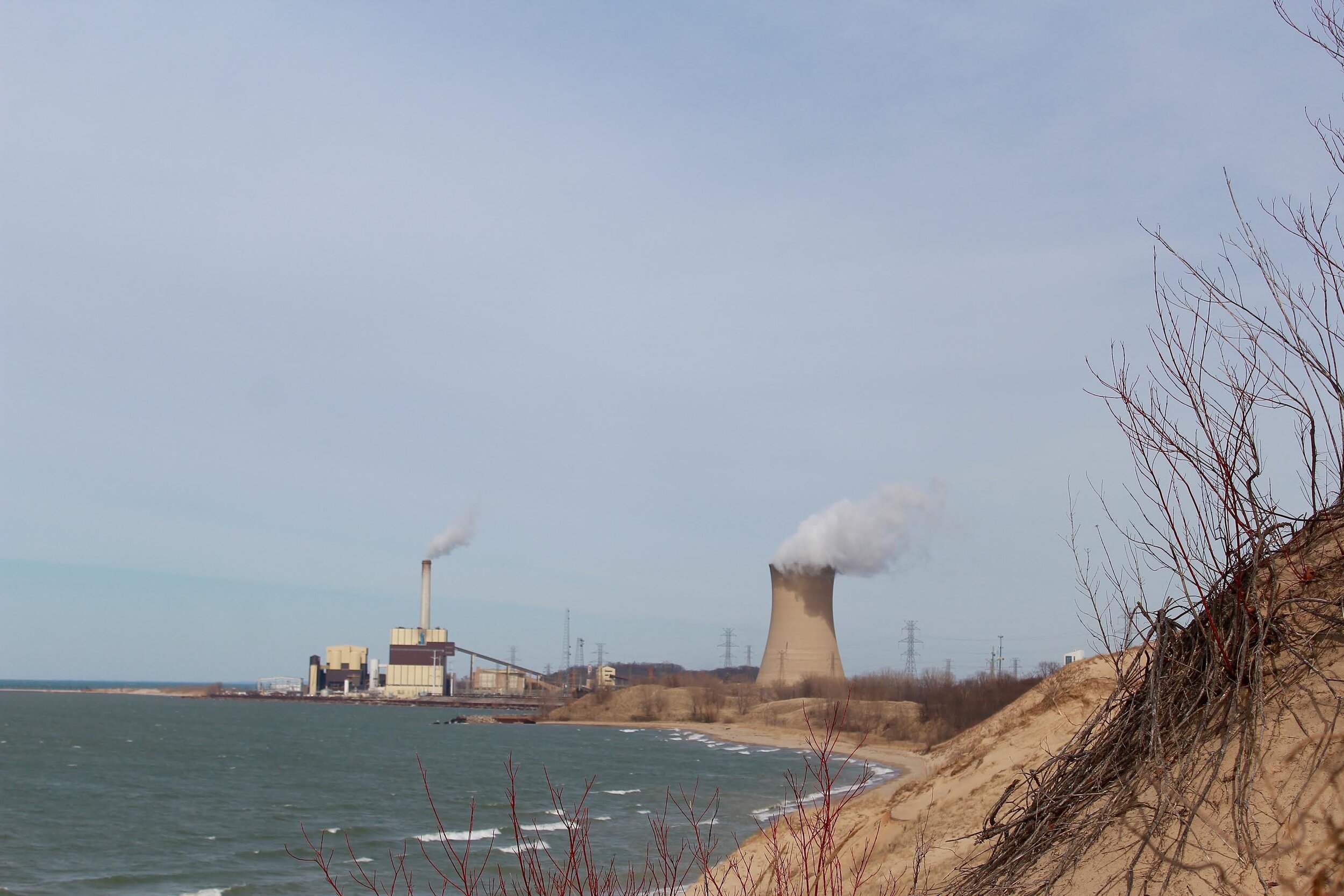We Won: Close the Coal Ash Loopholes EPA Campaign
On April 25, 2024, after years of litigation and grassroots organizing, first the first time in history, the Environmental Protection Agency (EPA) issued the Legacy Coal Combustion Residuals (CCR) Surface Impoundments and CCR Management Units Rule, extending federal monitoring and cleanup requirements to hundreds of previously excluded inactive, older coal ash landfills and ponds: 395 units (194 legacy coal ash ponds and 201 CCR management units).
Among these sites that must now be cleaned up is one we fought long and hard for - the Michigan City Generating Station! 37 units (14 legacy coal ash ponds and 23 CCR management units) across 20 coal plants in Indiana will now be subject to federal EPA regulation. Additional Northwest Indiana sites include the retired NIPSCO Dean H Mitchell Generating Station in Gary, the NIPSCO partially-retired RM Schahfer Generating Station in Wheatfield, and the retired Stateline Generating Station in Hammond.
About the Rule
Coal ash, or coal combustion residuals (CCR), is the toxic waste from coal burning for electricity. It contains a poisonous mixture of substances harmful to human health, and it is linked to hazardous health effects, such as asthma, kidney disease, heart disease, cancer, and even death.
In 2015, under the Obama Administration, the Environmental Protection Agency (EPA) adopted its first-ever safeguards to protect people from coal ash, known as the Coal Combustion Residuals (CCR) Rule. The rule was published in response to the largest industrial disaster in U.S. history at Tennessee Valley Authority’s Kingston Fossil Plant, which blanketed the surrounding community with 1 billion gallons of toxic coal ash sludge and sickened hundreds of cleanup workers; a lawsuit resulted.
However, when issued, the rule left behind dangerous loopholes. The agency excluded coal ash in landfills and waste piles that stopped receiving waste before the law went into effect, as well as dumpsites at power plants that had stopped producing power. Earthjustice has identified 566 landfills and ponds at 242 coal plants in 40 states that were excluded from EPA regulations, including at least 49 of these “legacy” sites that evade federal regulation, and all of these plants have contamination.
A Lawsuit Forces EPA to Take Action
-
Earthjustice files a lawsuit on behalf of environmental, community, and civil rights groups for the agency’s failure to regulate these legacy coal ash sites and close the loopholes. JTNWI’s executive director is a standing declarant in the suit.
According to the lawsuit, if the EPA had followed the law (the Resource Conservation and Recovery Act), “basic safeguards would be in place for inactive CCR [coal combustion residuals] landfills that would keep coal ash toxins out of our drinking water, air, rivers, lakes, and streams, and require remediation at the scores of sites already known to be contaminating water at dangerous levels.”
-
JTNWI delivers thousands of petitions and a joint letter to U.S. EPA Administrator Michael Regan and Region 5 Administrator Debra Shore in Chicago on behalf of dozens of Midwest and national organizations supporting the lawsuit’s demands to close the loophole once and for all.
-
The lawsuit leads to a groundbreaking consent decree that commits the EPA to revisit the Coal Combustion Residuals Rule.
-
On May 17, 2023, the EPA issues a new draft rule that proposes to finally begin closing loopholes that have exempted half of our nation’s coal ash waste from federal regulation.
If the rule goes into effect, for the first time in history, hundreds of older coal ash landfills, legacy ponds, and fill sites nationwide will now be subject to groundwater monitoring, closure, and cleanup.
-
The EPA publishes the final rule.
Michigan City Spotlight
In Michigan City, Indiana, NIPSCO’s Michigan City Generating Station (MCGS) has towered above the shores of Lake Michigan for nearly a century. For decades, NIPSCO began to dispose of its coal ash in a landfill in the neighboring Town of Pines. The landfill began to leak, contaminating the town’s drinking water and soil with 1 million tons of coal ash. Due to community members organized as People In Need of Environmental Safety, the EPA later declared the site an Alternative Superfund.
Today, history is at risk of repeating itself as an estimated 2 million cubic yards of fill containing toxic coal ash rests on ”made land” that extends into Lake Michigan at the MCGS and is held back from a catastrophe only by a deteriorating steel sea wall that is more than 70 years old. The plant’s environmental justice footprint is felt deeply by low-income and residents of color in the neighboring Michigan City community.
According to NIPSCO’s own reports, the huge coal ash deposit is contaminating the onsite groundwater and leaking into Lake Michigan and Trail Creek, which is further threatened by the worsening climate crisis. Because of the legacy nature of this coal ash (if stockpiled before the 2015 EPA CCR Rule, it is considered “legacy”), it was not previously subject to the federal rule, allowing NIPSCO to avoid responsibility for cleaning it up.

The final EPA rule symbolizes hope for the hundreds of environmental justice communities, like Michigan City, living near toxic coal ash sites.
What You Can Do
Help us continue building momentum!
On Wednesday, June 28th, braving the toll of the climate crisis and the worst air quality day in the world, we organized hundreds of people from across the country to mobilize in Chicago at the EPA hearing on the proposed EPA legacy coal ash rule.
Softcage Films captured this momentous day and compiled a short documentary for JTNWI entitled “Dispatches from the Frontlines of Coal Ash.” Watch the film below.
Protect Lake Michigan Art Series
In 2021, JTNWI launched the Protect Lake Michigan Campaign in response to mounting concerns posed by coal ash waste and pollution along the Lake Michigan shoreline. JTNWI commissioned Artist Pete Railand of Justseeds Artists’ Cooperative to bring a vision to the campaign, resulting in a series created through Linocut printmaking.




